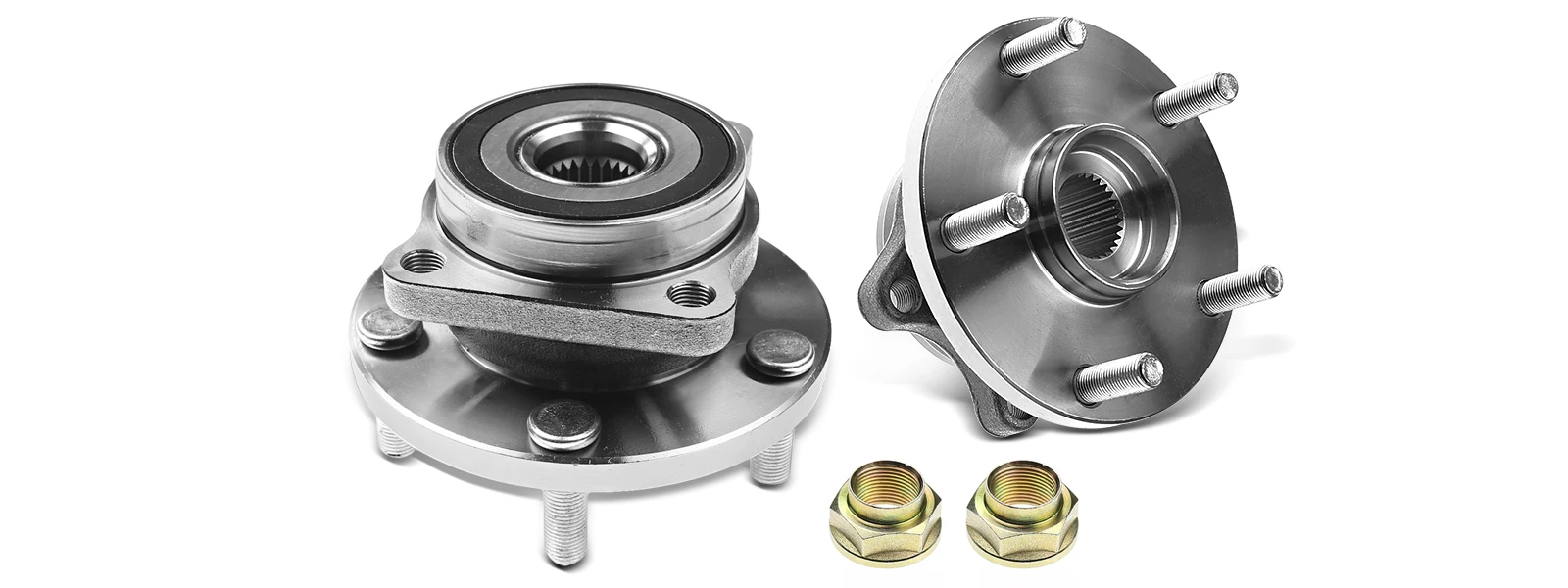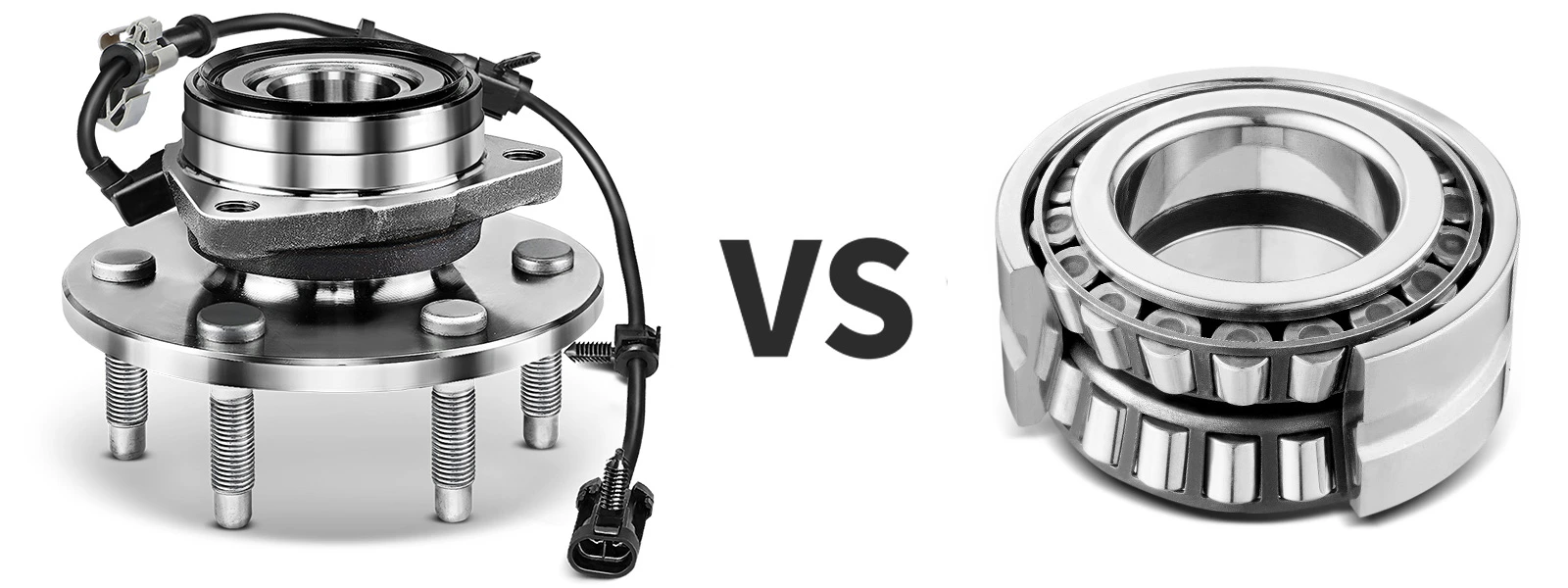Hub Assembly Vs Hub Bearing

Understanding the differences between a hub assembly and a hub bearing to help yourself make informed decisions about which part needs to be replaced.
When it comes to the components of a car's wheel assembly, the terms "hub assembly" and "hub bearing" are often used interchangeably. While they may sound similar, they are actually two distinct parts that serve different functions. Understanding the difference between a hub assembly and a hub bearing can help car owners better diagnose and repair wheel-related issues.

Hub bearing basics
A hub bearing, also known as a wheel bearing, is a set of steel balls held together by a metal ring, which is then mounted onto the wheel hub. The hub bearing's purpose is to support the weight of the vehicle while allowing the wheel to spin freely. Hub bearings also help to reduce friction between the moving parts of the wheel assembly.
When a hub bearing is damaged, it can cause a variety of problems such as unusual noises, steering wheel vibration, and uneven tire wear. In most cases, a damaged hub bearing will need to be replaced in order to restore proper function to the wheel assembly.
Hub assembly basics
A hub assembly, on the other hand, is a complete unit that includes the hub bearing, wheel studs, and wheel hub. The hub assembly is responsible for connecting the wheel to the vehicle's suspension system and allowing it to rotate freely. In addition to supporting the weight of the vehicle, the hub assembly also provides a mounting point for the brake rotor and caliper.
Replacing a hub assembly is often more straightforward than replacing a hub bearing, as it involves removing and replacing the entire unit rather than just the bearing itself. Hub assembly replacement may be necessary if the wheel hub or wheel studs are damaged, or if the assembly is otherwise compromised.
Why it is important to know the differences between the two?
Knowing the difference between a hub assembly and a hub bearing is important because it can help you make an informed decision when it comes to replacing parts on your vehicle. If you are experiencing issues with your wheels, such as noise, vibration, or a wobbling sensation, it is important to accurately diagnose the problem before replacing any parts.
If the issue is with the hub bearing, replacing just the bearing may be sufficient. However, if the issue is with other components of the hub assembly, such as the hub or ABS sensor, replacing the entire hub assembly may be necessary to ensure proper function and avoid future problems.
Differences between Hub Assemblies and Hub Bearings
Components included:
A hub assembly typically includes the hub, bearings, and studs, as well as other components such as the ABS sensor, hub seal, and wheel speed sensor. In contrast, a hub bearing refers specifically to the bearings themselves, which are the key component responsible for allowing the wheel to rotate smoothly. While a hub bearing may come with a seal, it does not include additional components such as the hub or studs.
Installation:
Due to the additional components included, installing a hub assembly can be more complex than replacing a hub bearing. Hub assemblies typically require a press or special tools for installation, while a hub bearing can often be replaced using basic hand tools.
Cost:
As a result of the additional components included, hub assemblies are generally more expensive than hub bearings. However, it's worth noting that the cost of replacing a hub bearing and any additional components that may be necessary (such as a damaged ABS sensor or hub seal) can quickly add up, potentially making the overall cost similar to that of a hub assembly replacement.
Performance:
Since a hub assembly includes all of the necessary components, replacing the entire assembly can provide a performance boost over simply replacing the bearings. This is because worn or damaged components such as the studs or wheel speed sensor can negatively impact the performance of the wheel and ultimately the vehicle. In contrast, replacing only the bearings may improve the immediate issue of wheel noise or vibration, but may not address other potential performance issues.
Maintenance:
Both hub assemblies and hub bearings require regular maintenance to ensure optimal performance and longevity. This typically involves periodic inspection, cleaning, and lubrication of the bearings or hub assembly, as well as replacing any damaged components as necessary.

How hub assembly and hub bearing work together?
In a front wheel drive (FWD) car, the front wheels are connected to the transmission through the hub assembly, which includes the hub bearing.
When the driver accelerates, power is transferred from the transmission to the front axle through the CV joints and half shafts, which are connected to the hub assembly. The hub assembly then transfers this power to the wheels, allowing the car to move forward.
At the same time, the hub bearing is responsible for supporting the weight of the car and allowing the wheels to spin smoothly. As the car moves, the wheel hub rotates around the stationary axle, and the hub bearing allows the hub to spin with minimal friction.
In this way, the hub assembly and hub bearing work together to transfer power from the engine to the wheels, while also supporting the weight of the car and allowing the wheels to rotate smoothly.
In conclusion, a hub assembly and a hub bearing are two related but distinct components of a car's wheel assembly. Understanding the difference between these parts can help you diagnose and fix issues with your wheels and make informed decisions when it comes to replacing parts. Whether you choose to replace just the hub bearing or the entire hub assembly, ensuring that your wheels are functioning properly is essential for a safe and smooth ride.











